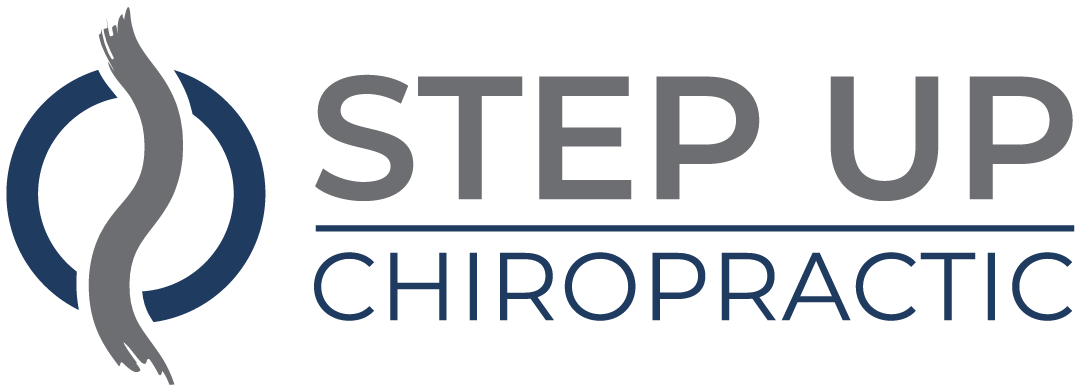If you're seeking effective ways to manage pain without relying solely on medication, you might want to explore natural techniques that could transform your experience. From herbal remedies to gentle movement therapies, there are numerous strategies designed to address discomfort holistically. Incorporating mindfulness practices can also aid in reshaping how you perceive pain. But what specific methods and lifestyle changes can truly make a difference in your daily life? Let's uncover the key elements that could lead you to a more balanced and pain-free existence.
Understanding Natural Pain Management
When you're dealing with pain, understanding natural pain management techniques can be a game changer. You might feel overwhelmed by traditional treatments or the side effects of medications, but turning to natural methods can offer you relief without those concerns.
One of the first steps you can take is to explore herbal remedies. Herbs like ginger, turmeric, and willow bark have been used for centuries to alleviate pain. They can reduce inflammation and help ease discomfort, making them a great addition to your pain management toolkit.
Another effective technique is incorporating physical activity into your routine. While it might seem counterintuitive, gentle exercises like yoga or stretching can help improve mobility and reduce pain over time. Movement increases blood flow and releases endorphins, your body's natural painkillers.
You can also consider heat and cold therapies. Applying a warm compress or heating pad can relax tense muscles, while cold packs can numb the area and reduce swelling. Alternating between the two can provide significant relief for various types of pain.
Lastly, diet plays an essential role in your pain management strategy. Eating anti-inflammatory foods, such as leafy greens, nuts, and fatty fish, can help reduce pain levels.
Mindfulness and Meditation Techniques
Mindfulness and meditation can greatly enhance your ability to manage pain.
By practicing mindfulness, you're not only becoming more aware of your sensations but also reducing stress and anxiety.
Guided meditation techniques can further support this journey, offering structured ways to ease discomfort and promote relaxation.
Benefits of Mindfulness Practice
Practicing mindfulness can transform your experience of pain, offering a powerful tool for managing discomfort. By focusing on the present moment, you can change how you perceive pain, reducing its intensity and impact on your daily life.
Here are some key benefits of incorporating mindfulness into your pain management routine:
- Enhanced Awareness: You become more attuned to your body, helping you recognize pain signals without judgment.
- Reduced Stress: Mindfulness lowers stress levels, which can exacerbate pain. When you're calmer, you're likely to feel less discomfort.
- Improved Emotional Regulation: You learn to manage emotions related to pain, fostering resilience and a more positive outlook.
- Greater Resilience: Regular practice builds mental strength, helping you cope better with pain flare-ups when they occur.
- Better Sleep: Mindfulness promotes relaxation, which can lead to improved sleep quality, aiding in overall recovery and pain relief.
Guided Meditation Techniques
Guided meditation techniques offer a structured way to harness the power of mindfulness, making it easier to manage pain and enhance your overall well-being. By following a recorded or live guide, you can focus your attention, quiet your mind, and cultivate a sense of peace.
Start by finding a comfortable position, whether seated or lying down, and close your eyes. As the guide leads you through visualization or deep breathing exercises, allow yourself to immerse fully in the experience. This can help you release tension and redirect your focus away from pain.
You might visualize a serene environment, such as a beach or forest, where you feel safe and relaxed. Incorporate this practice into your daily routine, even if it's just for a few minutes. Consistency is key.
Over time, you'll likely notice a reduction in your perception of pain and an increase in your emotional resilience. Remember, it's normal for thoughts to drift during meditation; gently bring your focus back to the guide's voice.
With patience and practice, guided meditation can become a powerful tool in your natural pain management toolkit.
Herbal Remedies for Pain Relief
When exploring natural pain management, herbal remedies can offer effective solutions that might surprise you. Many herbs have been used for centuries to relieve pain and discomfort, and they often come with fewer side effects compared to conventional medications.
Here are some popular options you might want to reflect on:
- Turmeric: Known for its anti-inflammatory properties, turmeric can help reduce pain associated with arthritis and other inflammatory conditions.
- Ginger: This powerful root can alleviate muscle pain and soreness, making it a great choice for post-workout recovery.
- Willow Bark: Often referred to as "nature's aspirin," willow bark has been traditionally used to treat headaches and lower back pain.
- Capsaicin: Found in chili peppers, capsaicin can reduce pain by blocking pain signals in the body when applied topically.
- Devil's Claw: This herb has shown promise in treating lower back pain and arthritis due to its anti-inflammatory effects.
Using these herbal remedies can be an empowering way to manage your pain naturally.
However, it's crucial to consult with a healthcare professional before starting any new treatment. They can guide you on the appropriate dosages and any potential interactions with other medications you may be taking.
Gentle Movement Therapies
Gentle movement therapies can play an essential role in reducing pain and improving your overall well-being.
Whether it's yoga, tai chi, or simple stretching, these activities offer a variety of benefits that you can easily incorporate into your daily routine.
Let's explore the different types of movement therapies and how they can fit seamlessly into your life.
Benefits of Gentle Movement
While many people seek quick fixes for pain relief, gentle movement therapies offer a sustainable alternative by promoting physical and mental well-being.
Engaging in gentle movements can greatly enhance your quality of life and help alleviate pain in a holistic way. Here are some benefits you can enjoy:
- Improved Flexibility: Gentle movements help maintain or regain flexibility, reducing stiffness.
- Enhanced Circulation: Moving your body encourages better blood flow, which can speed up healing processes.
- Stress Reduction: Gentle movement can lower cortisol levels, leading to increased relaxation and reduced anxiety.
- Mind-Body Connection: These therapies foster awareness of your body, helping you understand pain triggers and how to manage them.
- Boosted Mood: Regular gentle exercise releases endorphins, which can elevate your mood and decrease feelings of pain.
Types of Movement Therapies
Movement therapies encompass a variety of approaches that prioritize gentle techniques for pain relief and overall well-being.
One popular method is yoga, which combines breath control, flexibility, and meditation to help ease tension in your body. By practicing yoga, you can improve your strength while promoting relaxation, making it a great choice for managing pain.
Another effective option is tai chi, a Chinese martial art that focuses on slow, flowing movements. This practice enhances balance and coordination while reducing stress. You'll find that the gentle nature of tai chi allows you to connect with your body, fostering a sense of calm.
Pilates is another movement therapy that emphasizes core strength and stability. Through controlled movements, Pilates can help alleviate discomfort by promoting better posture and alignment. As you engage in Pilates, you'll notice increased body awareness, which can be beneficial for pain management.
Finally, Feldenkrais is a unique approach that centers on gentle movements and awareness. It encourages you to explore how you move and helps you discover more efficient ways to engage with your body, ultimately reducing pain.
Exploring these therapies can lead to a more comfortable, active life.
Incorporating Movement Into Daily Life
Incorporating gentle movement into your daily routine can considerably enhance your overall well-being. By making small adjustments, you can promote physical health, reduce pain, and improve your mood.
Here's how you can seamlessly integrate movement into your everyday life:
- Take short walks: A brief 10-minute walk can boost circulation and relieve tension.
- Stretch regularly: Incorporate gentle stretching every hour to maintain flexibility and reduce stiffness.
- Practice yoga or tai chi: These mind-body practices enhance balance, flexibility, and awareness while calming the mind.
- Engage in household chores: Activities like cleaning or gardening get you moving and can be surprisingly effective workouts.
- Use a standing desk: Alternating between sitting and standing can help alleviate discomfort during long work hours.
Nutrition's Role in Pain Management
Nutrition plays an essential role in managing pain, as the foods you eat can either exacerbate or alleviate discomfort. By focusing on a balanced diet rich in anti-inflammatory ingredients, you can considerably improve your pain levels and overall well-being.
Start by incorporating more fruits and vegetables into your meals. These foods are packed with antioxidants, vitamins, and minerals that combat inflammation. Berries, leafy greens, and cruciferous vegetables like broccoli are excellent choices.
Whole grains, such as brown rice and quinoa, also provide essential nutrients while reducing inflammation.
Omega-3 fatty acids are another vital component in your diet. These healthy fats, found in fish like salmon and walnuts, can help lower inflammation and ease pain. You might also want to include spices like turmeric and ginger, both of which have natural anti-inflammatory properties.
On the flip side, try to limit processed foods, sugars, and trans fats. These can trigger inflammatory responses in your body, worsening your pain. It's also wise to be mindful of dairy and gluten, as some individuals may find these foods aggravate their symptoms.
Staying hydrated is equally important. Drinking enough water can help flush out toxins and keep your joints lubricated, potentially reducing pain.
Essential Oils and Aromatherapy
Essential oils and aromatherapy offer powerful alternatives for natural pain management. By harnessing the therapeutic properties of these concentrated plant extracts, you can alleviate discomfort and enhance your overall well-being.
Whether you're dealing with headaches, muscle soreness, or joint pain, integrating essential oils into your routine might just be the relief you need.
Here are some popular essential oils you can use for pain management:
- Lavender: Known for its calming properties, lavender can help reduce tension and relieve headaches.
- Peppermint: This invigorating oil provides a cooling sensation that's great for easing muscle pain and tension.
- Eucalyptus: With its anti-inflammatory properties, eucalyptus can help with joint pain and respiratory discomfort.
- Ginger: Known for its warming effect, ginger can alleviate muscle soreness and improve circulation.
- Chamomile: Chamomile is perfect for reducing inflammation and promoting relaxation, making it great for overall pain relief.
To use these oils, you can diffuse them in your living space, apply them topically when diluted with a carrier oil, or even add them to a warm bath.
The best part? They not only help with pain but also promote a sense of calm and relaxation.
Lifestyle Changes for Pain Prevention
Making simple lifestyle changes can greatly reduce your risk of experiencing pain in the first place. Start by focusing on your diet. Incorporating anti-inflammatory foods like fruits, vegetables, whole grains, and healthy fats can help keep pain at bay.
Try to limit processed foods, sugars, and trans fats, as these can trigger inflammation.
Next, consider your physical activity level. Regular exercise strengthens muscles, improves flexibility, and enhances overall wellness. Aim for at least 150 minutes of moderate aerobic activity each week, along with strength training exercises twice weekly.
Even simple activities like walking or yoga can make a big difference.
Don't underestimate the importance of sleep. Quality rest is vital for your body to recover and repair itself. Aim for 7-9 hours of sleep each night, and establish a calming bedtime routine to improve your sleep quality.
Stress management is another key factor. Chronic stress can lead to muscle tension and pain. Incorporate relaxation techniques like deep breathing, meditation, or mindfulness into your daily routine to help alleviate stress.
Finally, stay hydrated. Drinking enough water supports joint health and helps prevent muscle cramps. Aim for at least eight 8-ounce glasses of water daily.
Conclusion
By exploring these natural pain management techniques, you can take charge of your well-being. Embracing mindfulness, herbal remedies, gentle movement, and a balanced diet not only helps alleviate pain but also enhances your overall quality of life. Remember, small lifestyle changes can lead to significant improvements. Start incorporating these holistic practices today, and you'll unleash the power to manage discomfort naturally, paving the way for a healthier, happier you.




